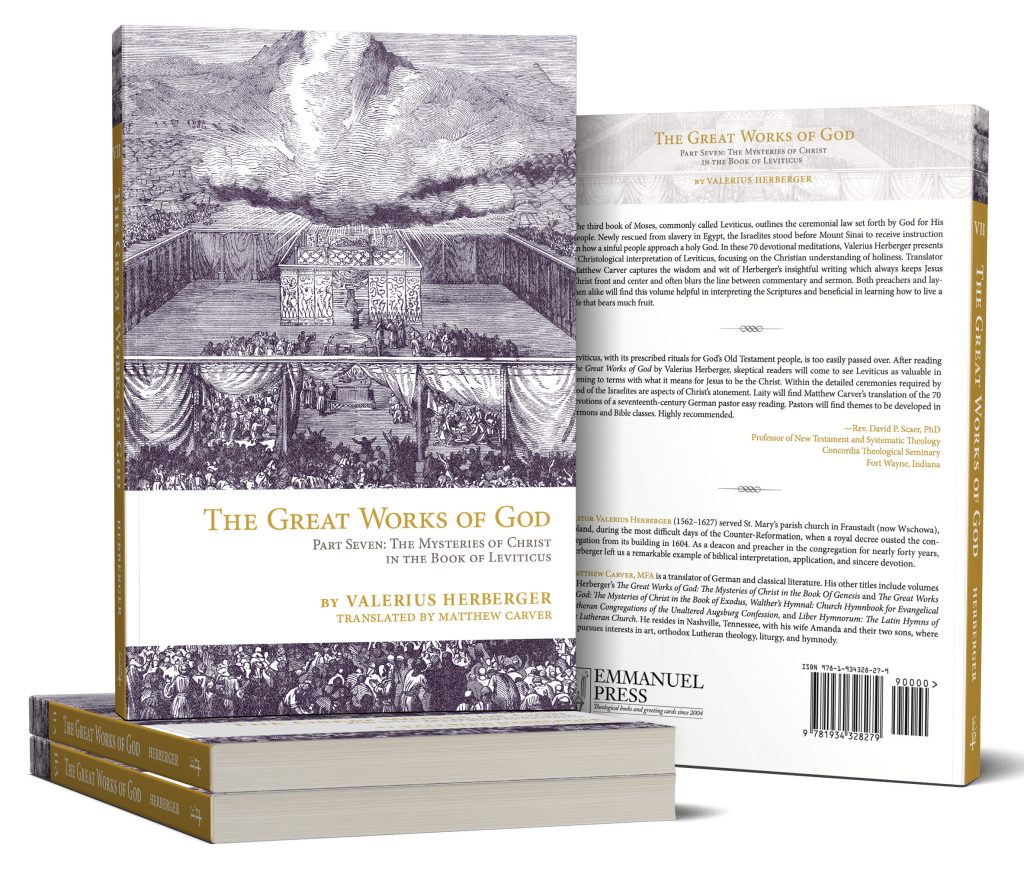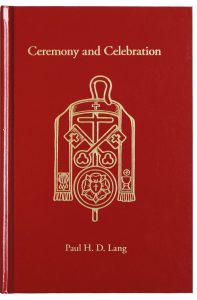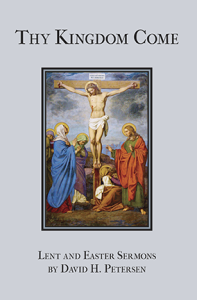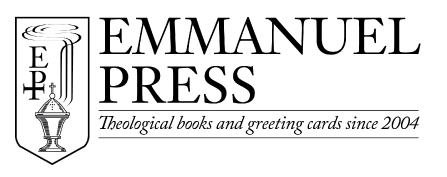THE LATEST NEWS
Now Available: The Great Works of God: Leviticus + An endorsement from Dr. Geoff Boyle
 We are delighted to announce the release of The Great Works of God, Part Seven: The Mysteries of Christ in the Book of Leviticus, written by Valerius Herberger, translated by Matthew Carver. Find a description of the book, purchasing information, endorsements, and excerpts here.
We are delighted to announce the release of The Great Works of God, Part Seven: The Mysteries of Christ in the Book of Leviticus, written by Valerius Herberger, translated by Matthew Carver. Find a description of the book, purchasing information, endorsements, and excerpts here.
In addition, we offer you the following review from Rev. Dr. Geoffrey Boyle, Professor of Pastoral Ministry and Missions at Concordia Theological Seminary, Fort Wayne, Indiana:
“Consolation in the name of Jesus—that’s what Valerius Herberger delivers in Part Seven of his meditations on Scripture. Much like Augustine’s Confessions, this devotional commentary teaches and exhorts, convicts and comforts the Christian through a running prayer to the Father, through the Son, with the Holy Spirit. Every page richly orders all of Leviticus towards Jesus Christ and His atoning sacrifice for us. Yet, as Herberger sees Jesus in the covenant to Adam and Eve, Abraham, Isaac, and Jacob, he’s never willing to leave us as the baptized out either. It’s always looking back and forward, and always from the cross of Christ.
“The breadth of Scriptural knowledge and citation, along with hymns and classical poems, makes this series of meditations through Leviticus a true nourishment of the soul, and Matthew Carver’s translation allows one to feed without interruption! That is, the book that causes most of us to stumble while reading through the Scriptures—Leviticus—comes to us, through Herberger’s insight and Carver’s translation, as a book of Christ. Herberger shows how profitably and clearly Leviticus ‘explains how the Lamb of God was slain from the beginning of the world (Rev. 13:8). From the beginning of the world, His bloody death was always seen in the sacrifices of the people of God; and from the beginning of the world, the power of His merit has also availed for all believing hearts’ (25). Everything points to Jesus: the sacrifice of cattle to His strength; the corners of the altar to the corners of His cross; the sheep to His gentleness and innocence; the goats and kids to His authority and boldness; the doves to His humility; and every burnt offering to Christ the crucified (31, 33). On and on it goes: Here in Leviticus the shadow, there in Christ the truth itself—’This is all full of mystery’ (72). With Herberger as your guide, the ‘Mosaic shell’ of Leviticus cracks and gives forth ‘the precious, delectable nut’ of the Gospel of Jesus Christ (79). And not just Leviticus alone, Herberger claims, but ‘how utterly the whole course of [Christ’s] life is wrapped up in the Old Testament!’ (165). So, ‘Rouse yourself, devout heart, and ponder this. You will discover it in truth’ (123).”
Dr. David Scaer endorses The Great Works of God: Leviticus
 “Leviticus, with its prescribed rituals for God’s Old Testament people, is too easily passed over. After reading The Great Works of God by Valerius Herberger, skeptic readers will come to see Leviticus as valuable in coming to terms with what it means for Jesus to be the Christ. Within the detailed ceremonies required by God of the Israelites are aspects of Christ’s atonement. Laity will find Matthew Carver’s translation of the 70 devotions of a 17th-century German pastor easy reading. Pastors will find themes to be developed in sermons and Bible classes. Highly recommended.”
“Leviticus, with its prescribed rituals for God’s Old Testament people, is too easily passed over. After reading The Great Works of God by Valerius Herberger, skeptic readers will come to see Leviticus as valuable in coming to terms with what it means for Jesus to be the Christ. Within the detailed ceremonies required by God of the Israelites are aspects of Christ’s atonement. Laity will find Matthew Carver’s translation of the 70 devotions of a 17th-century German pastor easy reading. Pastors will find themes to be developed in sermons and Bible classes. Highly recommended.”
Dr. David P. Scaer
Professor of New Testament and Systematic Theological
Concordia Theological Seminary
Fort Wayne, Indiana
Now available for pre-order: The Great Works of God: Leviticus
 Originally written in German by 17th-century Lutheran pastor Valerius Herberger, The Great Works of God, Part Seven: The Mysteries of Christ in the Book of Leviticus, is now available in English. The third book of Moses, commonly called Leviticus, outlines the ceremonial law set forth by God for His people. Newly rescued from slavery in Egypt, the Israelites stood before Mount Sinai to receive instruction on how a sinful people approach a holy God. In these 70 devotional meditations, Valerius Herberger presents a Christological interpretation of Leviticus, focusing on the Christian understanding of holiness. Translator Matthew Carver captures the wisdom and wit of Herberger’s insightful writing which always keeps Jesus Christ front and center and often blurs the line between commentary and sermon. Both preachers and laymen alike will find this volume helpful in interpreting the Scriptures and beneficial in learning how to live a life that bears much fruit.
Originally written in German by 17th-century Lutheran pastor Valerius Herberger, The Great Works of God, Part Seven: The Mysteries of Christ in the Book of Leviticus, is now available in English. The third book of Moses, commonly called Leviticus, outlines the ceremonial law set forth by God for His people. Newly rescued from slavery in Egypt, the Israelites stood before Mount Sinai to receive instruction on how a sinful people approach a holy God. In these 70 devotional meditations, Valerius Herberger presents a Christological interpretation of Leviticus, focusing on the Christian understanding of holiness. Translator Matthew Carver captures the wisdom and wit of Herberger’s insightful writing which always keeps Jesus Christ front and center and often blurs the line between commentary and sermon. Both preachers and laymen alike will find this volume helpful in interpreting the Scriptures and beneficial in learning how to live a life that bears much fruit.
As Carver notes, Herberger “writes mainly for the average educated layperson, with a very personal style. He mostly avoids technical or theological jargon and offers interesting insights….It is useful as a devotional since nothing exactly like this exists today.” Furthermore, Carver explains the book’s wide appeal: “It can be used theologically for perspectives on biblical interpretation and typology, devotionally for personal spiritual enrichment, and homiletically as an example of historical models of applying interpretation.”
Pre-order your copy today!
*Leading up to the book’s release in mid-April 2024, we’ll be posting more details and excerpts. See the right sidebar to sign up for emails or Like us on Facebook to keep updated.
The Altar: An Excerpt from Ceremony and Celebration
 “Long before churches were built, the church’s worship was carried out at or around an altar. In Gen. 8:20 we read that ‘Noah builded an altar unto the Lord.’ Even before that, ‘Cain brought of the fruits of the ground an offering unto the Lord. And Abel brought of the firstlings of his flock and of the fat thereof’ (Gen. 4:3, 4). These sacrifices must have been offered on an altar. Therefore, the altar was the place of worship before there were church buildings, and the altar is more than an ornament or piece of furnishing in a church. It is a monument or object around which and in which the church’s worship is centered.
“Long before churches were built, the church’s worship was carried out at or around an altar. In Gen. 8:20 we read that ‘Noah builded an altar unto the Lord.’ Even before that, ‘Cain brought of the fruits of the ground an offering unto the Lord. And Abel brought of the firstlings of his flock and of the fat thereof’ (Gen. 4:3, 4). These sacrifices must have been offered on an altar. Therefore, the altar was the place of worship before there were church buildings, and the altar is more than an ornament or piece of furnishing in a church. It is a monument or object around which and in which the church’s worship is centered.
“We may regard the altar as: 1. the Lord’s table, 2. an emblem of sacrifice, and 3. a symbol of God’s presence.
“In one of its aspects the Holy Communion Service is a fellowship meal in which we are united with Christ and all fellow believers in a holy union or communion. As such it is celebrated at a table. This table is the altar, which for that reason is called the Lord’s table (1. Cor. 10:21).
“The altar is also an emblem of sacrifice. The word altar itself indicates this. It comes from the Latin altare ara, which means an elevated place for sacrifice. In the church’s worship the altar represents by association Christ’s sacrifice of Himself for the redemption of the world, and the place where the benefits of this sacrifice and all the blessings of God are conveyed to the believers. But the sacrificial aspect of the altar does not end there. It is the monument on which we offer in response to God’s mercy our sacrifices to God, that is, our sacrifices of prayer, praise, thanksgiving, and such material tokens of the offering of ourselves with all we are and have as money, bread, and wine.
“Thirdly, the altar is a symbol of God’s presence. It symbolizes the place where God and His people meet. Our Lord Himself refers to the altar as a symbol of God in Matt. 5:23 and 23:18-20. The altar stands for God as our flag stands for our country. That is why we direct our worship to the altar and reverence it by bowing, genuflecting, and kneeling. That is also the reason why the altar itself, and not any of its surroundings or ornaments, such as crucifixes, reredos, pulpit, or any other object, is in matter of location and all other considerations the focal point and center of the church’s worship and the church building.”
-Paul H.D. Lang in Ceremony and Celebration
Thy Kingdom Come: An Excerpt from Septuagesima
 “The main point of the parable is that entrance into the kingdom comes by grace. The workers are rewarded for work they did not perform. This is hardly a surprise to us; in fact, we practically expect it.
“The main point of the parable is that entrance into the kingdom comes by grace. The workers are rewarded for work they did not perform. This is hardly a surprise to us; in fact, we practically expect it.
“G.K. Chesterton once said, ‘Do not be proud of the fact that your grandmother was shocked at something which you are accustomed to seeing or hearing without being shocked…It may be that your grandmother was an extremely lively and vital animal and that you are a paralytic.’
“Chesterton has in mind immoral things. He means, ‘Don’t think you are more sophisticated than your grandmother because you watch television shows full of vulgarities and aren’t bothered by them. It could be that she was highly intelligent and sensitive and you have been paralyzed by evil so much that you don’t even notice it.’
“The same sort of numbness applies to the Gospel as well. I fear that it is even worse. We’re not just numb, but we’ve crossed over the line drawn by Bonhoeffer into ‘cheap grace.’ I fear we’re now guilty of thinking grace is worse than cheap; it is a right, an entitlement, as though God owed us salvation. Repent.”
–These are the first 4 paragraphs from the sermon for Septuagesima, based on Matthew 20:1-16. Find Thy Kingdom Come here.

Let’s stay in touch! To receive the most current information on our products and new releases, join our email list today!

